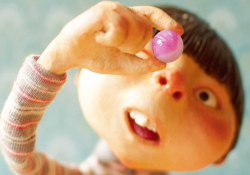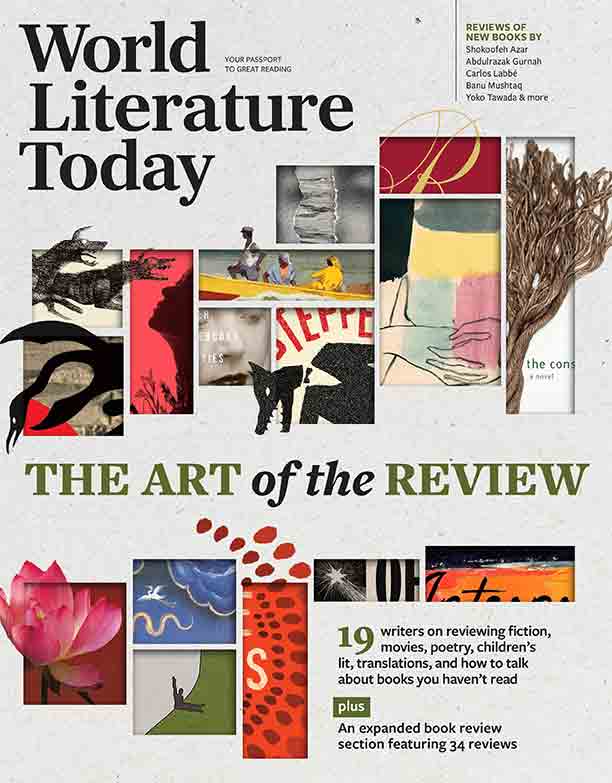Global Travels through Unfamiliar Worlds: Five Children’s Books for World Kid Lit Month
September is World Kid Lit Month, a time to step beyond our familiar reading borders and explore horizons new. Here are four middle-grade novels and a picture book from five continents: a globe-trotting tour of recent publications to enjoy as a family or add breadth to your children’s bookshelves.
AFRICA
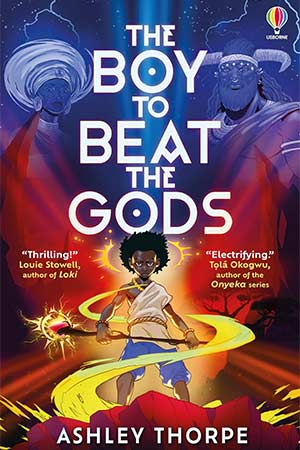 The Boy to Beat the Gods
The Boy to Beat the Gods
by Ashley Thorpe
Usborne, 2024
Kayode is a young goatherd who longs to defy the elders and eat the forbidden fruit of the baobab tree, a fruit reserved only for the gods. Seeing how the Orisha—the pantheon of Yoruba divinities—sweep through one village after another leaving devastation in their wake, Kayode bristles with a sense of injustice and a burning curiosity: what would happen if he ate the fruit? Would he develop the strength to defend his people and put a stop to the Orisha once and for all? When Kayode learns that his own father sacrificed himself to save Kayode in an earlier raid on their village, and when Kayode’s sister Temitope is taken by the gods, he has all the reasons he needs to eat a fallen fruit that endows him—for a limited duration—with the powers of a demigod. Enter Tiwa, also hungry for vengeance after her own village is ransacked by the cruel Orisha, and a backstabbing, shapeshifting trickster god named Eko, and Kayode has his companions for a perilous, action-packed quest to bring the gods to justice.
In an author’s note, Thorpe touches on the difficult balance between drawing on the rich vein of Orisha stories, part of his own proud African ancestry, while respecting the deities of a living religion, a challenge not faced by authors reinventing the ancient Greek and Roman pantheons in contemporary children’s fiction. Out of respect for Yoruba religious sensitivities, Thorpe changes the names of the nine Orishas but doesn’t shy away from endowing them with all the malice and irreverence we need in a good storybook villain.
ASIA
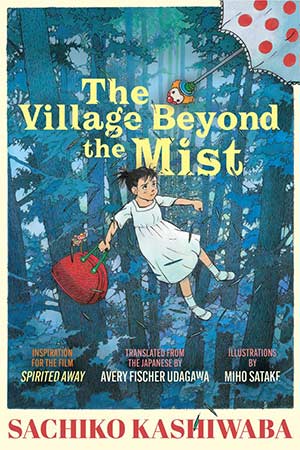 The Village Beyond the Mist
The Village Beyond the Mist
written in Japanese
by Sachiko Kashiwaba
illustrated by Miho Satake
translated by Avery Fischer Udagawa
Restless Books, 2025
Lina is packed off by her father for a summer vacation with an old friend, reassured she’ll be met at the station and shown the way. She isn’t met but, undeterred, treks off into the woods toward a mysterious, abandoned mining town. Getting lost in the fog, she arrives as the mist clears to an otherworldly hamlet, with toytown houses and gardens with blossoms of every season at once. A frosty welcome from the landlady of the guesthouse makes Lina dread the summer ahead, a feeling soon replaced by cheerful busyness as she befriends the quirky cast of residents and accidentally finds herself fixing problems and troubled relationships, with a spot of magic and a lot of laughter along the way.
Fans of Studio Ghibli will love this long-awaited first English translation of Sachiko Kashiwaba’s 1975 novel, the inspiration for Hayo Miyazaki’s film Spirited Away. This is translator Avery Fischer Udagawa’s third translation of the middle-grade novels of Kashiwaba, following The House of the Lost on the Cape and the Batchelder Award–winning Temple Alley Summer. The edition is enhanced by characterful illustrations throughout by Miho Satake, also the illustrator of the much-loved Moribito series by Nahoko Uehashi, and several books in the Kiki’s Delivery Service series by Eiko Kadono, another Japanese children’s classic only recently published in English translation (by Emily Balistrieri) decades after the original Japanese series and the 1989 Studio Ghibli adaptation.
EUROPE
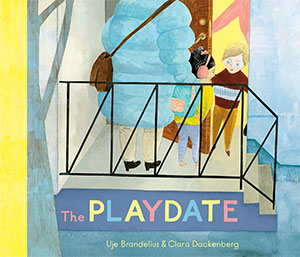 The Playdate
The Playdate
written in Swedish
by Uje Brandelius
illustrated by Clara Dackenberg
translated by Nichola Smalley
Lantana, 2025
A young girl and her mom are going for a playdate at a boy’s house, a special treat for the only child of a single mom. Told from the girl’s perspective, we see two parallel stories, with our narrator and her mom experiencing the “playdate” very differently.
“Me and Henry start playing straight away” while mom gets out the vacuum cleaner and gets to work cleaning the family’s large, luxurious house. When the little girl follows Henry’s dog into a room she hasn’t been in before, she finds a closet with a bag of abandoned toys. On top is a robot. “It’s exactly the same one I want more than anything in the world . . .” A moment of temptation, followed swiftly by a horrible feeling of guilt.
This quiet picture book in muted watercolors poses a moral quandary and no simple solution. An unusual book to read together and discuss, it could be the start of a very poignant conversation with young children about poverty and equity. Should every story have a happy ending? Does everyone’s life have a happy beginning?
AMERICAS
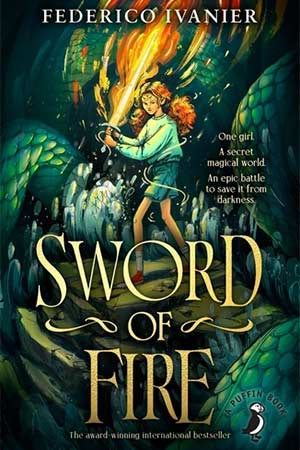 Sword of Fire
Sword of Fire
written in Spanish
by Federico Ivanier
translated by Claire Storey
Puffin Books, 2025
A rather reluctant and accidental hero, Martina finds herself drawn into a parallel world where she is greeted as the long-awaited Sent One who will fulfill the prophecy to find the lost Sword of Fire, defeat the dark forces, and return the balance of Wizardry—the magical energy that has long been off-kilter.
When her parents divorce, Martina and her overworked mother move away from their familiar neighborhood and friends to the other side of Montevideo, Uruguay’s capital city, to her deceased grandmother’s house. Among the dusty old belongings left in the house, Martina finds an intriguing metal cube, a trinket she takes to keep on her bedside table, which unfolds to become the portal that propels her into a threatening medieval realm.
The trust placed in her and the purpose laid before her in this alternate life as the Sent One make a pleasant change from the fraught family relations and bullying at her new school, but she meets the challenges of this strange world with the cynicism of an early teen, righteously outraged that her new stepbrother, Matías, as nice as he is compared to her new stepsister, should show up in this world too as her “protector.” Who does he think he is, claiming he can protect her? She’ll show him. . . . With a healthy dose of sibling squabbles and skepticism about the workings of this mysterious place Novrogod, we’re launched into a classic quest story with a foot in both worlds—the timeless and the modern.
OCEANIA
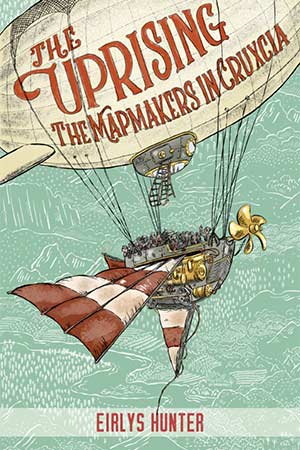 The Uprising: The Mapmakers in Cruxcia
The Uprising: The Mapmakers in Cruxcia
written by Eirlys Hunter
illustrated by Kirsten Slade
Gecko Press, 2021
We meet the Santander family boarding a dirigible, an airship of an unspecified, early industrial, steampunk age, as they voyage to new lands in search of their father, an explorer and mapmaker who hasn’t been seen for a year. Consisting of a mom, four children, and an irreverent parrot called Carrot, this neurodiverse and multitalented family all chip in to make the best of a challenging situation. Arriving in Cruxcia, they’re excited to find technological marvels they haven’t experienced before such as homing pigeons to send messages, a laundering machine, and hot water piped directly into people’s houses. Even a shed in the yard where you can wash under a shower of hot rain!
Befriended by a local guide and interpreter, they’re quickly entrusted into a conspiracy of rebels plotting against the regime of the exploitative colonial governor, Malvicious Mundle, who erects statues to himself, pursues a nefarious project to extract minerals and desecrate the locals’ common ancestral lands, and arrests anyone who shows the slightest hint of dissent.
Working together, with Francie putting her extraordinary visionary and artistic skills to creative use, will they be able to free the prisoners before it’s too late and help defend Cruxcia against this oppressive regime? With Kirsten Slade’s beguiling bird’s-eye view illustrations throughout, this is a captivating story of finding friendship and community amidst the whirlwind of an unfamiliar language/culture and a menacing state—with good humor and lots of delicious-sounding snacks along the way.

